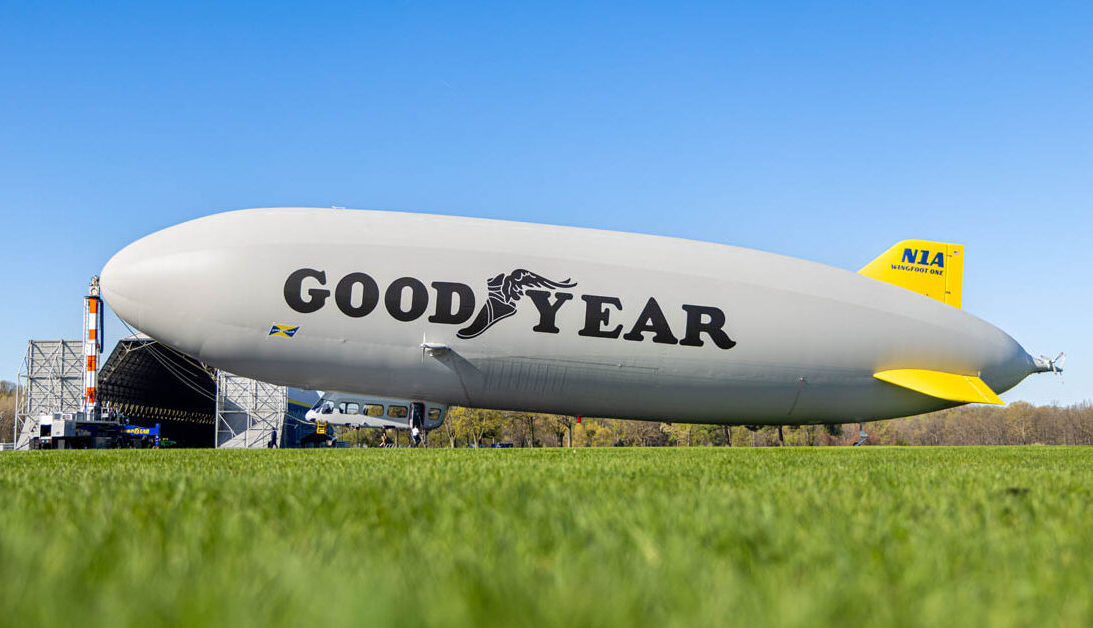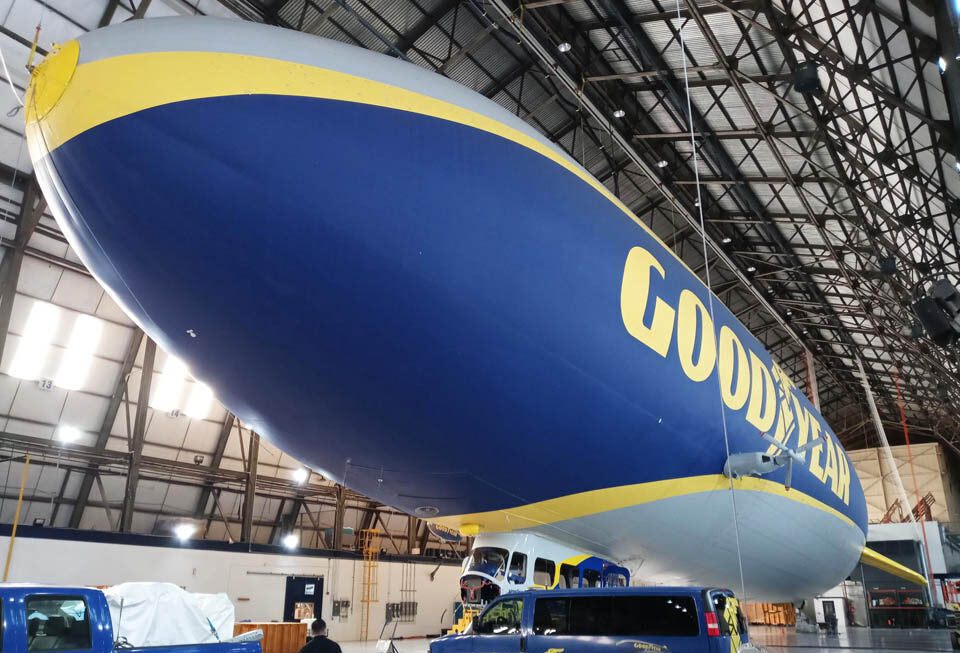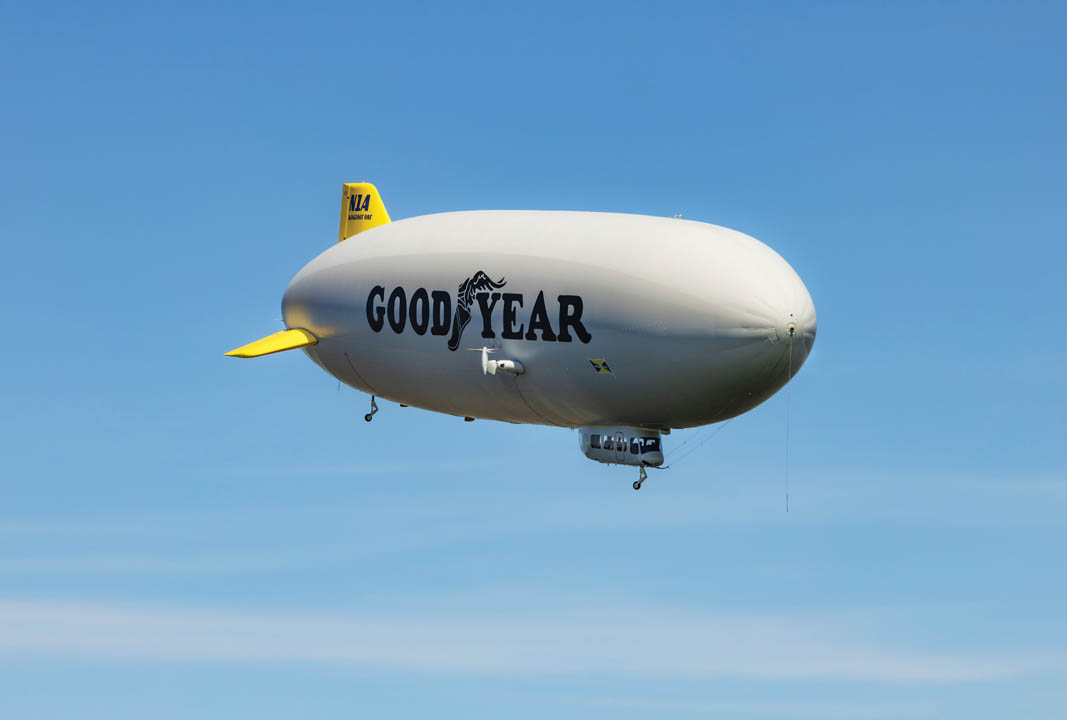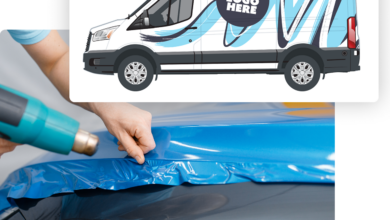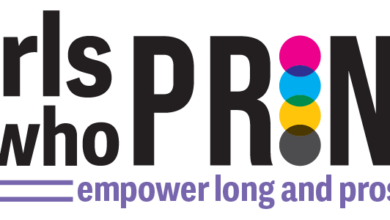“You’re going to need a longer tape measure.”
That’s what Joe Kist, director of sales from Central Graphics in Akron, Ohio, was told when he arrived at nearby Goodyear to measure what he thought was a wall wrap project.
Instead of a wall, the project Goodyear’s team had in mind was a bit more complicated. To celebrate the 100th anniversary of the Goodyear Blimp, Central Graphics was asked to wrap the blimp in vinyl to return it to its original look when it first took flight in 1925.
The project wouldn’t be Central Graphics’ first ride with the blimp. In the past, the company has installed vinyl gold lettering and striping on the tailfins of two of the company’s blimps. However, a job as big as wrapping a 246′ long blimp in its entirety did come with a new set of challenges.
Materials
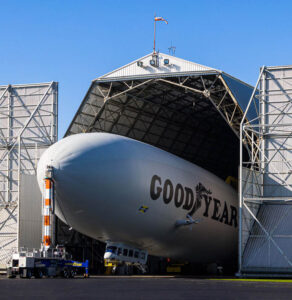 “At first it was about collecting vinyl,” said Dave Soulsby, president at Central Graphics. The exterior of the blimp is a Kevlar, 13-ounce banner material. It requires tiny holes in the material to let helium release and keep the vessel afloat. “It takes flight, loses helium, then two bladders inside pump new helium into it.”
“At first it was about collecting vinyl,” said Dave Soulsby, president at Central Graphics. The exterior of the blimp is a Kevlar, 13-ounce banner material. It requires tiny holes in the material to let helium release and keep the vessel afloat. “It takes flight, loses helium, then two bladders inside pump new helium into it.”
Early on, Central Graphics had reached out to Ohio-based Mactac, manufacturer of pressure-sensitive adhesive material. Mactac responded with prototype samples for peel adhesion testing before settling on a final product, which they printed and delivered 30 rolls. Due to weight limitations, they avoided standard printing or using overlamination, focusing instead on a single-layer custom color adhesive film. The Central Graphics team then contracted with a South Carolina company to perforate the material so that it could breathe.
“After we figured out the perforated holes, it was all about the adhesive,” Soulsby said.
Since the blimp was scheduled to be wrapped for the anniversary year only, it would return to its modern, painted design in 2026.
“We couldn’t use a 180 or something super sticky because it would pull the paint off. We worked with Mactac. They set us up and printed at one of their facilities, where they had to come up with a specialized adhesive for easy installation and long-term removability.”
The blimp’s low surface energy Tedlar required a specialized adhesive for strong adhesion, with the unique gray color needing custom matching. Within three weeks, testing was done at the Goodyear hangar.
“We used a Colex finishing machine to cut all the graphics,” Soulsby said. “And I think we got everything on 60″ rolls from Mactac.”
“Mactac ensures that we have the best product and the right product,” said Jeff Loofboro, managing director at Central Graphics. “For this project, color match was important, opacity was significant to ensure the paint underneath didn’t show through, and clean removability was key because the blimp is going back to its original format in one year. Mactac hit the sweet spot with a solution that wouldn’t remove the paint on the blimp under the vinyl.”
Design
For almost any vinyl wrap installation, an installer’s design team will work with digital art files to make sure a company logo or other design element aligns with the shape of the object being wrapped. One particularly unique challenge the Central Graphics team faced with the blimp project is that there was no digital file of Goodyear’s 100-year-old logo.
Goodyear’s logo is called the Wingfoot, and the hangar that houses the blimp was first constructed in 1917 near Wingfoot Lake, Ohio, southeast of Akron. In 1925, when the blimp first took flight, the logo was hand-painted on the blimp’s material. The design team at Central Graphics was presented with just only a photograph of the original blimp on which to base their design work.
Zeppelin, the original airship manufacturer in Germany, requires approval for any modifications to the blimp. So, first, Goodyear needed to approve the custom color match. Mactac matched the color, then Central Graphics and Goodyear also approved the peel adhesion strength and ease of application. After trials and optimizations, test reports were submitted to Zeppelin, resulting in final product approval.
Central Graphics designers were then tasked with recreating the 105′ long logo in Adobe Illustrator. Each letter is 10.5′ tall and transferred to 25′ adhesive panels.
Installation
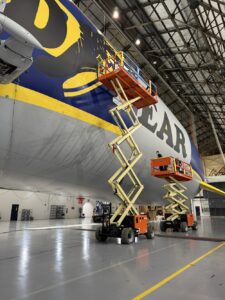 It’s a major understatement to call the Goodyear Blimp project a big job. Installation began with three crews of two people, each in scissor lifts, to get the material to blimp-level. Over the next four weeks, the six installers rarely took even a weekend day off until the project was completed.
It’s a major understatement to call the Goodyear Blimp project a big job. Installation began with three crews of two people, each in scissor lifts, to get the material to blimp-level. Over the next four weeks, the six installers rarely took even a weekend day off until the project was completed.
Common installation tools were of
no use to the Central Graphics crew. “We couldn’t use knives, scissors, heat guns, or torches,” Soulsby said. Neither tool is a good idea around a blimp. Instead, the team settled on 3M knifeless tape. For heat application, the Zeppelin company approved installation via hair dryers only, which were less likely than propane torches to burn through the material.
“We also had to put pool noodles all around the lifts to cover sharp edges,” Soulsby said.
The team installed gray material over top of black and then pulled back the logo design to reveal black lettering underneath.
“These panels were 25′ long, and we had to maintain a consistent overlap. Working around obstructions like wings, motors, things you’re not used to,” Soulsby said. “It took six installers four weeks, even though it’s all rounded. We’ve all wrapped the VW Bugs and we’ve figured that out, but using 25′ panels, it doesn’t quite work the same.”
Weight was also a concern. In all, the Central Graphics team added only 300 pounds of material to the overall weight of the blimp. Soulsby’s team was told that anything over 500 pounds meant the removal of some of the seating in the blimp’s gondola. “They have to be able to pull it down to maintain a certain loft,” Soulsby said. “This wrap kept it cool enough that they could maintain their loft.”
Client relationship
On a project this big, Soulsby said his company was lucky to have the Goodyear Blimp hangar just 20 minutes away from their shop. “It’s not like every client is easy to work with, but this process was so easy. I can’t wait to work with Goodyear again,” he added. “You can’t say that about every client.”
On June 3, the Goodyear Blimp featuring the work of the Central Graphics team flew above the Akron area along with two other blimps Goodyear owns. It was the first time in years that all three blimps had flown together in the same place.
For Soulsby, the moment was somewhat bittersweet. The event occurred while he was on a previously scheduled vacation, so he missed the 100-year-old Goodyear Wingfoot logo floating across the skies over Akron. “I saw plenty with all the pictures people were sending me,” he said.
